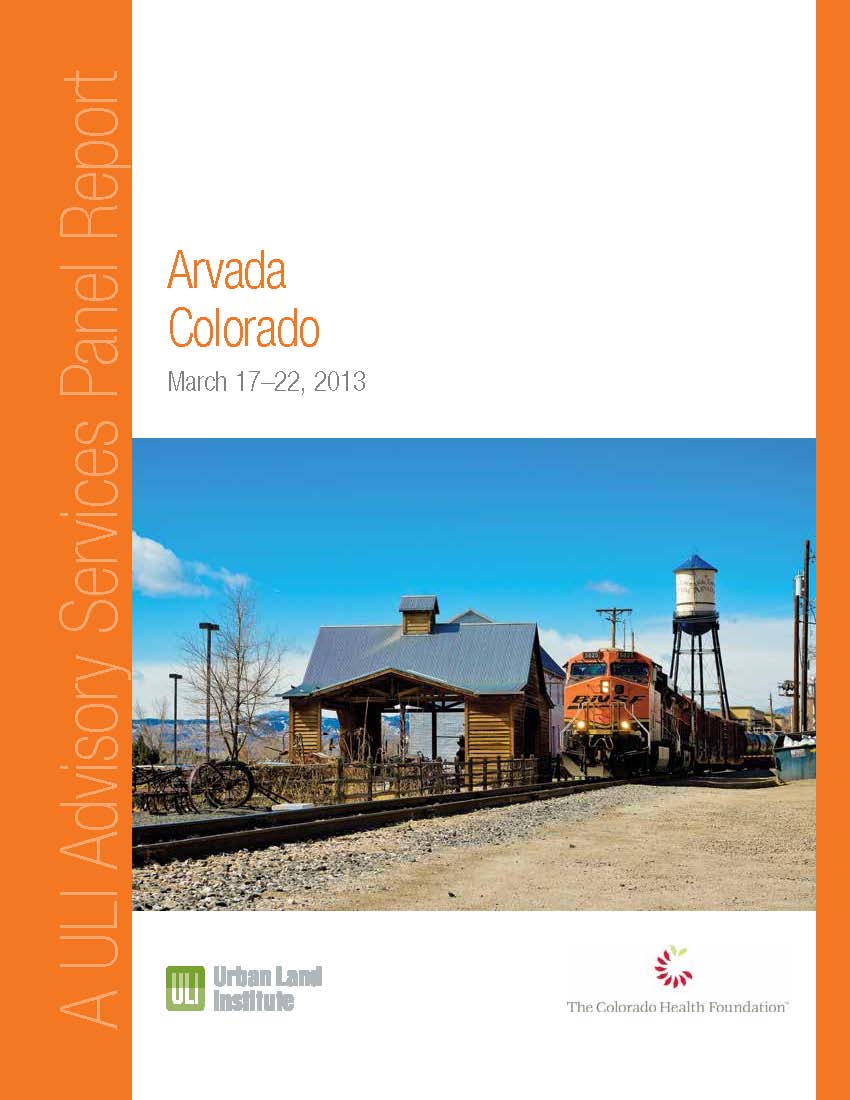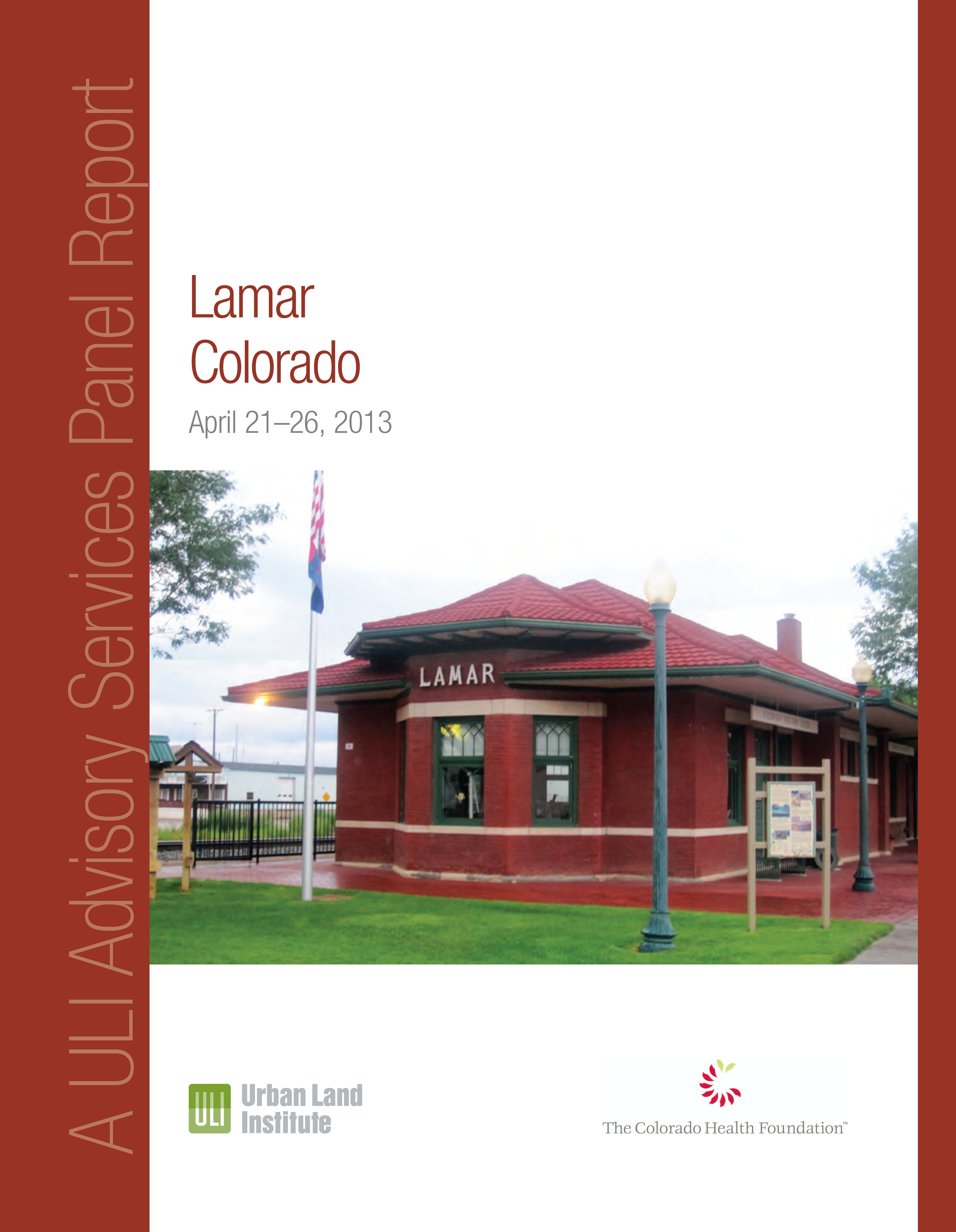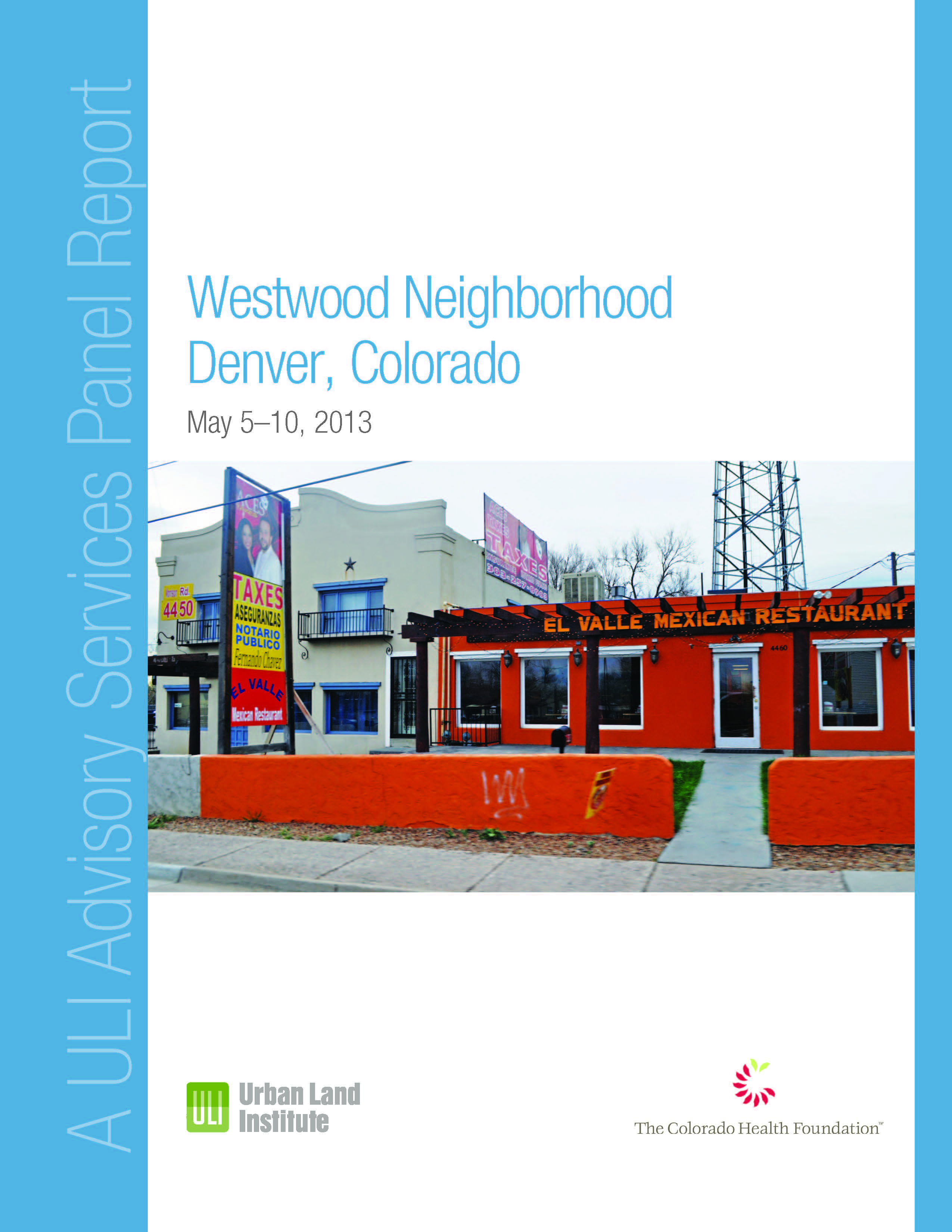Top Story
Colorado Health Foundation and ULI Working to Create Healthier Communities in Colorado
December 4, 2013
Reports and Presentations from Advisory Services Panels and Related Publications
In the spring of 2013 the Colorado Health Foundation sponsored three ULI Advisory Services panels in Colorado communities of varying typology – Arvada (a first-ring Denver suburb), Lamar (a rural community in Eastern Colorado), and Westwood (an urban Denver neighborhood) – with the goal of developing strategies for healthy living environments, where the healthy choice is the easy choice. These panels marked the first time that Advisory Services panels focused specifically on connections between land use and health, and served as a launching point for ULI’s newest initiative, Building Healthy Places.
Each panel was chaired by Ed McMahon, ULI senior resident fellow for sustainable development, and had on-the-ground assistance from local governments and organizations. McMahon distilled six lessons learned on creating healthy communities from the panel process:
- There is no one-size-fits-all solution for building a healthy community.
- In every community, the design of buildings, streets, and neighborhoods can make physical activity unnatural, difficult, or even dangerous, especially for children, the elderly, or the disabled.
- People will not walk as part of their daily routine unless there are attractive or important destinations to walk to (like a healthy downtown, a major park, or a school), and the route is safe and interesting.
- Building healthy places is about more than making changes in the built environment. It is also about programs and activities.
- Many of the principles of healthy design are the same principles that sustainability and smart-growth advocates have long recommended for reducing the impact of the automobile.
- While the design of a community can have a crucial influence on public health, it can also affect the cultural, social, and economic well-being of a community and its citizens.
Panel Reports
Reports from each panel – which provide background on the communities and specific recommendations for designing healthier places – can be downloaded below.

Arvada, Colorado (Download the report)
The Arvada panel was asked to focus on enhancing walkability and bikability and recommend ways to move this forward, specifically within the forthcoming Comprehensive Plan update and specifically making connections to community health.
Recommendations from the Arvada panel included:
- Create a healthy community vision statement;
- Understand the market realities and health concerns of the study area and city as a whole in order to inform planning efforts;
- Create a chapter of the Comprehensive Plan that focuses on community health; and
- Apply best practices in walking and biking, recreation, and healthy food access to new developments in order to set high standards for community health.

Lamar, Colorado (Download the report)
The Lamar panel was asked to recommend programming and infrastructure investments to promote walking, biking, and access to open space and outdoor recreation, understanding that the design of communities can affect public health and make the communities economically competitive.
Recommendations from the Lamar panel included:
- Focus physical and programming improvements on four specific areas of the community;
- Focus on a set of city-wide strategies such as activating all parks, creating a new trail, ensuring adequate lighting and safe crossings, and prioritizing completion of pedestrian and bike routes through the city that link major destinations;
- Create healthy-living programs; and
- Identify and promoting neighborhood identity.

Westwood, Colorado (Download the report)
The Westwood panel was asked to look at how Westwood could foster a built environment that would make it easier to walk, bike, play and engage in daily activities that encourage movement and connection, while also recommending specific infrastructure investments to achieve this.
Recommendations from the Westwood panel included:
- Enhance Morrison Road through traffic calming, art installations, and business relocations to become the cultural and physical focus of the neighborhood and encourage pedestrian activity;
- Focus on attracting new uses to the neighborhood including a grocery store and a recreation and wellness center; and
- Strengthen the parks and recreation system by adding new park facilities and making strategic investments in underutilized park spaces.